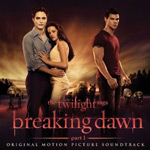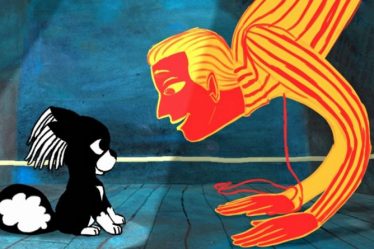
Perhaps you’ve heard about Art Spiegelman’s Pulitzer Prize-winning Holocaust-era graphic novel Maus, which has gotten a lot of press lately for being banned in Tennessee. That press probably made it even more famous and widely read. It’s a gorgeous, culturally valuable book, and it should be celebrated. So too, should Leben? Oder Theater? (Life? or Theatre?), an autobiographical series of paintings representing the graphic record of artist Charlotte Salomon’s life.
The parallel is fair, because Jewish-German artist Salomon lived through Hitler’s rise to power, and was captured and sent to Auschwitz, where she died the day she arrived. This chronicle of her life, which is comprised of 769 paintings created between 1941 and 1943, is one of the most important bodies of work in the 20th century, but much like the art of so many other female artists, it has been all but erased from history. If the folks in Tennessee have a problem with Maus, this collection of paintings, which includes illicit sex, murder, suicide, Nazis, and violence, many by a member of ‘the fairer sex’, would make their heads explode.
There have, since the release of the book Leben? Oder Theater? always been devoted and passionate devotees of Charlotte Salomon’s work. A committed collection of such fans, including directors Eric Warin and Tahir Rana, producer Julia Rosenberg, and actors Marion Cotillard and Keira Knightley recently got together to created the animated feature film Charlotte, about Salomon’s life and work. Charlotte is, above all, great storytelling, so hopefully it will bring wider appreciation to Salomon’s art and life story.
As you may have surmised, Charlotte is decidedly adult animation. The film is a coming-of-age story about a young girl fully growing into adulthood, as Charlotte Salomon was only 26 when she died 5 months pregnant on October 10th, 1943.
As a young adult, Charlotte (voiced by Marion Cotillard in French version, and Keira Knightley in the English) discovered that, not only did her namesake and aunt commit suicide, so did her mother and grandmother, the latter of the two having done so before Charlotte’s eyes. It was these experiences, and her fear that she too would die young, that drove her to embark on the project of painting the story of her own life. She painted over 1000 paintings between 1941 and 1943, all relating her experiences, and she expressed both joyous and tragic events with equal candor and insight. The animated feature retells what led her to create this visual chronicle of her life, from the relationships to family from childhood to young adulthood, to a first love that validated her art, to navigating the harsh realities of Nazi Germany and the occupied parts of France, and most of all, her ever-expanding understanding of herself and her place in the world. She tells her story with a staggering, sometimes even disturbing level of honesty.
Though there’s a lot to love in the many ways the film Charlotte speaks the artist’s truth, what is most poignant and inspiring is that optimism and appreciation for the beauty of life are central to its visual storytelling and theme. Even as some of the darkest moments of Charlotte’s experience are happening, there are, for example, rays of sunshine, or the palette of Spring colors, or rich, bucolic landscapes juxtaposed against the subject matter in the scenes. That parallels Charlotte’s own beliefs. Though she feared she’d succumb to the same depression so prevalent in the women in her family, she actively chose to see the beauty in life, no matter what was happening around her. She believed joy has more power than sadness.
To read the review in its entirety, go to AWFJ.org HERE.



